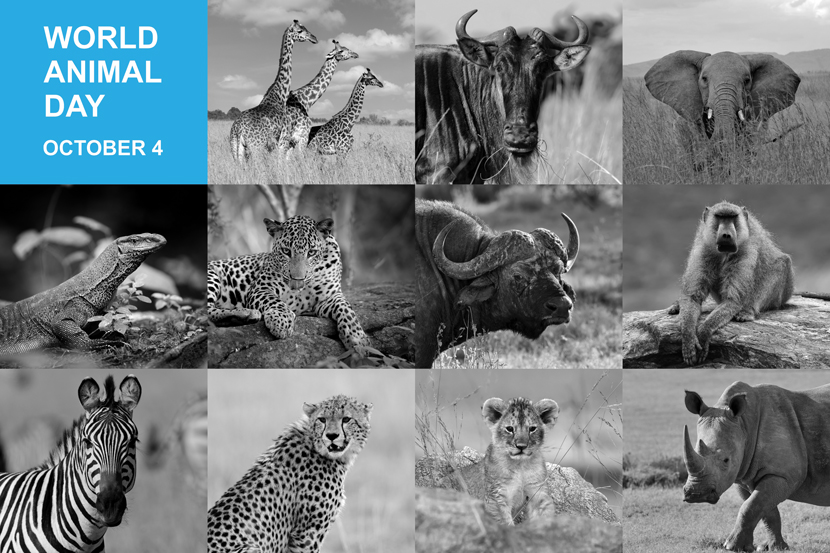World Animal Day: A Celebration of Animal Rights and Welfare
The Origin of World Animal Day?
World Animal Day was first celebrated in 1931 during a convention of ecologists in Florence, Italy. The date was chosen to coincide with the feast day of St. Francis of Assisi, the patron saint of animals and the environment. The primary goal was to highlight the plight of endangered species. However, over the years, its scope has broadened to include all animals, emphasizing the importance of treating them with kindness and respect.
World Animal Day is an international event that aims to increase awareness and improve education about animal welfare. The ultimate goal is to ensure that animals, both wild and domesticated, can lead lives free from cruelty and suffering. This day serves as a reminder that animals, like humans, are sentient beings with emotions, thoughts, and individual personalities. Their rights and welfare should be respected and protected.
Yes, World Animal Day is an annual international event celebrated on October 4th. It has been observed since 1925 and has garnered support from a growing international community dedicated to ending the needless suffering of animals.
World Animal Day is marked by various activities and events worldwide. From awareness and educational events, shelter open days, and fundraising events, to peaceful protest marches, the day is filled with actions that advocate for animal welfare. Whether it's a concert, a sponsored walk, a bake sale, or an educational workshop, the primary aim is to raise awareness and mobilize support for animal rights.

How is World Animal Day Celebrated?
On October 4th, various events and activities take place worldwide, including:
- Educational Events: Schools and institutions organize workshops and seminars to educate people about animal rights and welfare.
- Animal Shelter Visits: Many visit animal shelters to adopt pets or volunteer their time.
- Fundraisers: Organizations hold fundraisers to support animal welfare projects.
- Awareness Campaigns: Social media campaigns, marches, and rallies are organized to raise awareness about animal cruelty and promote animal rights.
Why Celebrate World Animal Day?
Celebrating World Animal Day serves multiple purposes:
- Awareness: It sheds light on animal issues, from endangered species to animal cruelty.
- Unity: It brings together animal lovers from different backgrounds, cultures, and beliefs.
- Action: It encourages people to take action, whether it's adopting a pet, donating to an animal welfare organization, or simply spreading the word.
What Initiatives and Policies has the EU taken for Animals?
The European Union (EU) has long recognized the importance of animal welfare and has taken significant steps to ensure the well-being of animals within its member states. This article delves into the various initiatives, policies, and actions the EU has undertaken to champion the cause of animal welfare.
1. Historical Context
The EU's commitment to animal welfare can be traced back to the Treaty of Amsterdam in 1997. This treaty was the first to acknowledge animals as sentient beings, laying the groundwork for subsequent legislation and policies. The recognition of animals' ability to feel pain, pleasure, and other emotions was a monumental step forward, emphasizing the moral and ethical responsibility to treat them with compassion and respect.
2. Legislative Framework
The EU has established a robust legislative framework to safeguard animal welfare. Some key directives and regulations include:
- Directive 98/58/EC: This directive sets out the minimum standards for the protection of animals kept for farming purposes. It emphasizes the need for adequate housing, feeding, and medical care.
- Regulation (EC) No 1/2005: Focusing on the welfare of animals during transport, this regulation mandates specific conditions to minimize stress and injury during transit.
- Directive 2010/63/EU: This directive pertains to the protection of animals used for scientific purposes. It promotes the "Three Rs" principle – Replacement, Reduction, and Refinement – to minimize animal testing.
3. Strategic Approach
The EU's strategic approach to animal welfare is evident in its multi-annual action plans. The most recent plan, covering 2012-2015, aimed to improve animal welfare standards, enhance information exchange, and promote better education and training in this domain.
4. International Collaboration
The EU collaborates with international partners to promote animal welfare globally. It has been instrumental in advancing animal welfare discussions at forums like the World Organisation for Animal Health (OIE) and the United Nations Food and Agriculture Organization (FAO).
5. Challenges and the Way Forward
While the EU has made significant strides in animal welfare, challenges persist. Issues like varying implementation standards across member states and the need for continuous research and innovation require attention. The EU continues to work towards harmonizing standards, promoting best practices, and fostering a culture of compassion and care for animals.
What Initiatives has Cyprus taken for Animals?
Cyprus, being an island nation with a rich biodiversity, has taken several initiatives to protect and care for animals:
- Legislation: Cyprus has laws in place that protect animals from cruelty and neglect. These laws are enforced rigorously, and violators face strict penalties.
- Animal Welfare Organizations: Numerous NGOs and organizations in Cyprus work towards the welfare of animals, rescuing them from unfavourable conditions, providing medical care, and ensuring they find loving homes.
- Awareness Campaigns: The government and private organizations frequently run campaigns to educate the public about the importance of animal welfare and how they can contribute.
- Shelters and Rehabilitation Centers: Cyprus is home to several animal shelters and rehabilitation centres that provide care and shelter to stray and injured animals.
Conclusion
World Animal Day is more than just a day; it's a movement towards a more compassionate world where every creature, big or small, is treated with respect and love. By understanding its history, significance, and the activities that take place, we can all play a part in making the world a better place for animals.

